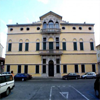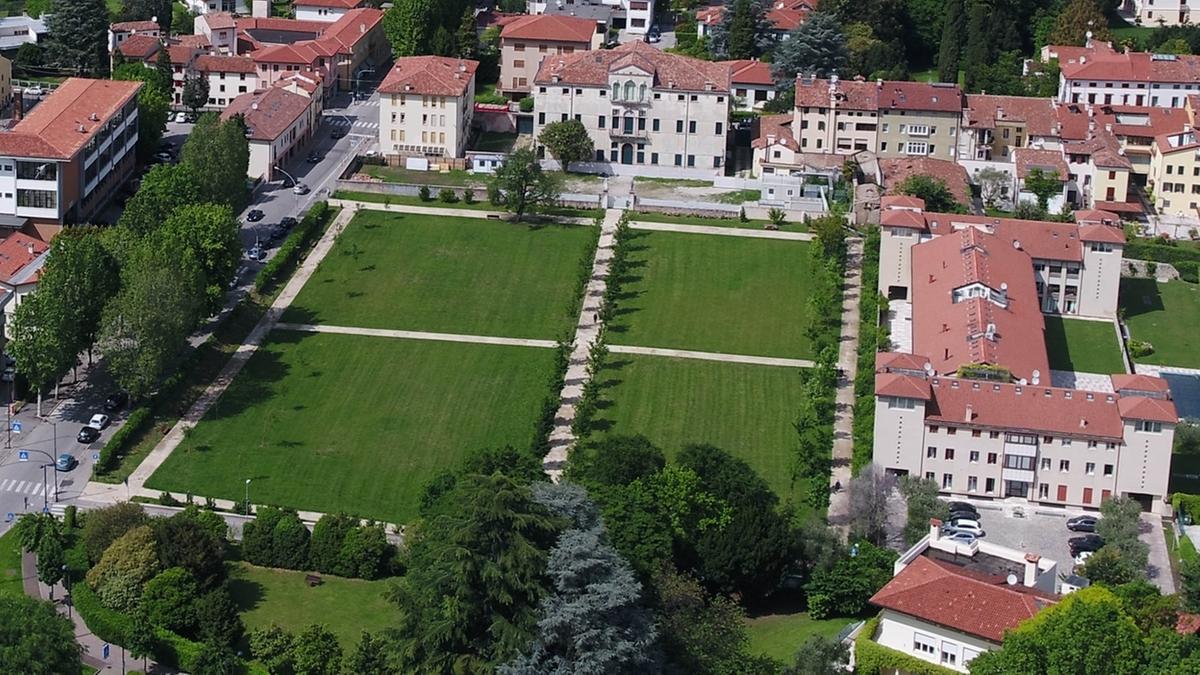

NAVIGATE HERE
Palazzo Bonaguro is a historic building of the fifteenth century located near the old bridge in the neighborhood of Angarano in Bassano del Grappa, in the province of Vicenza in the Veneto region. It is one of the four headquarters of the civic museums of Bassano. The building originated in the fifteenth century and belonged to the Venetian family of the Veggia until the early seventeenth century. The building was divided into a master complex equipped with a colombara (dovecote) and protected by a wall. The ancient owners also built a scenic garden full of allegorical statues, perspective paths, fountains, according to the sixteenth century taste that gave the farm a monumental guise. The property was located in lands planted with vineyards and wheat well represented in the statues. The Querini, the Correr, the Albertoni and the Giaconi Bonaguro contributed to the landscaping of the palace, by virtue of the tastes and dispositions of the various families that possessed it from the 17th to the 20th centuries. Since 1969 it belongs to the Municipality of Bassano that uses it for exhibitions or other cultural events.


Inside the building, imposing and symmetrical structure, large central halls are arranged, superimposed, connected by stairs and surrounded by circuits of rooms, while in the basement there are cellars with brick vaults. Some decorative elements belong to the local Bassanese tradition, such as the curbs of the windows with arched profiles, the cocciopesto strips and the serliane of the main floor, while other elements are attributable to the Venetian tradition, like the grand staircase with the access portals, some elements of the north façade, the statues of the exedra and the fountain niche. Since its origins, the interior of the building was largely frescoed, with decorative increases occurred in the sixteenth century, witnessed by the representation of a banquet of ladies and gentlemen, according to the famous theme proposed at that time by Paolo Veronese. More recently, dating back to the nineteenth century, you can admire the ceiling decoration in a room on the second floor depicting medallions with male and female heads.



 nfo
nfo








